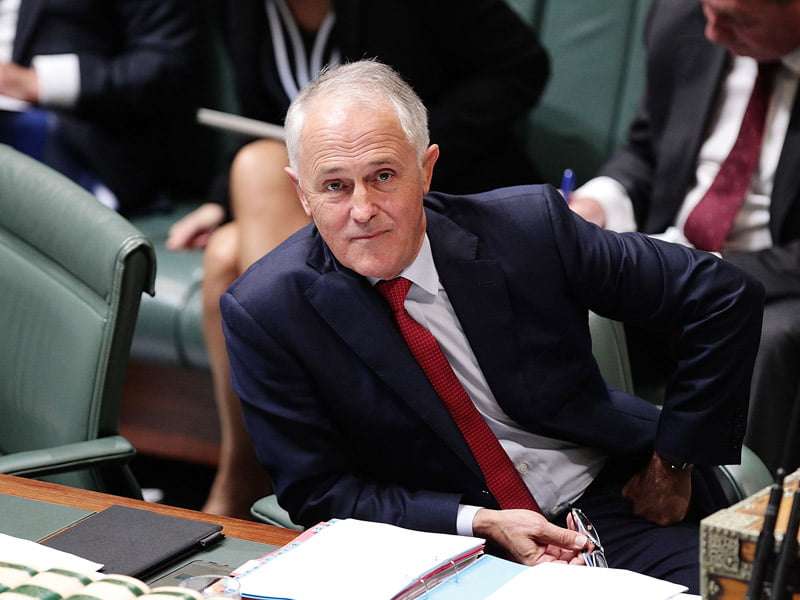After presenting the nation with a massively watered-down plan for the National Broadband Network (NBN) in April 2013, the Prime Minister Malcolm Turnbull has now had to bail out NBN Co to the tune of $19.5 billion to shore up the worst infrastructure disaster in the nation’s history.
At a time when the US telecommunications analyst Point Topic figures show that over 89 per cent of new global access network connections between Q1 2015 and Q1 2016 are fibre-to-the-premise (FTTP), Mr Turnbull now appears stubbornly hell-bent on providing the nation with a second-rate lemon that will hold business and industry back from full participation in the global digital economy.
Three years after he spruiked that the Coalition would provide everyone in Australia 25/5 Mbps connections to the NBN for $29.5 billion by the end of 2016, we can conclude that Mr Turnbull’s tenure as Communications Minister was a disaster for the nation’s future prosperity.

Government does not seem to understand the connection between tech infrastructure and prosperity, and the need for Australia to be a leader and an active participant in the global digital economy.
There can be no greater goal today for the nation than building universal broadband access to underpin participation in the digital economy. An NBN that utilises FTTP, wireless and satellite to connect Australians to the NBN is an instrumental requirement.
What is irreconcilable is why the National Party continues to support the Liberal’s failed NBN policy, especially given that the worst affected areas are regional centres where the National Party is struggling to remain relevant.
Having ascended to the position of Prime Minister, Mr Turnbull has done nothing of substance to unwind the mess. In the lead-up to taking over as Prime Minister a year ago there had been considerable conjecture that as PM he would be free to develop a more expansive plan.
The opportunity for change at the 2016 election did not occur, and it is now too late for Mr Turnbull to admit to a massive policy failure.
Conservative commentators appear to have become tongue-tied in recent days after having spent years arguing against further government spending on the NBN, and lambasting the Labor policy to push forward with a new access network when Telstra refused to budge.
And having made a firm commitment on many occasions that the Government would not put further funding towards the NBN, Mr Turnbull has broken yet another promise to the nation, and proceeded to bail out NBN Co.
By taking this step, it will be much harder to sell NBN Co and to recoup a reasonable portion of the government’s equity and loan contributions, now totaling about $49 billion.
There will be a need to replace the FTTN during the 2020s. Investors know this. Investors also know the Government is holding $49 billion in debt, so all the cards will be with potential investors.
Failure to get an investor to take on some of the risk now is a indicator that Mr Turnbull’s NBN plan was terminally flawed from the beginning.
But the warning signs have been there since the very beginning, when Mr Turnbull took farcical steps to rewrite the definitions of internationally accepted engineering terminology.
A wishy-washy effort is under way to justify the Government’s $19.5 billion bail-out of the NBN. The suggestion that NBN Co’s Everest-like financial rating of AA- justifies the Government’s investment at commercial terms is laughable.
If NBN Co’s management team are doing a wonderful job, why aren’t there international investors camped out in NBN Co’s foyer?
Rather than focusing on the job at hand, NBN Co’s management team have become de facto apologists for the failed Turnbull plan. NBN Co held back notification that the Optus HFC would be dumped until after the last election, a move that probably cost taxpayers several hundred million dollars in lost pre-rollout engineering works.
NBN Co continues to wheel out media spin about how good FTTN is going to be, and how much more expensive FTTP connections would cost.
We need to look no further than New Zealand to see that Chorus has reduced the cost of their FTTP connections from NZ$4600 in FY2013 and FY $2014 to NZ$2,798 in FY2016.
Chorus anticipates reducing the cost per premises further. We know that NBN Co can match Chorus, you just won’t hear this from the NBN Co management team.
Communications minister Mitch Fifield and Finance minister Mathias Cormann stated in a joint media release that “in anticipation of a future privatisation of NBN as provided for in the NBN Companies Act 2011, it is expected that this loan will be re-financed by NBN on external markets in 2020-21.”
What this means is the Coalition Government, if it wins the 2019 Federal election, is going to attempt to sell NBN Co in 2021 having provided $29.5 billion equity, a $19.5 billion “commercial” loan and an ongoing debt to Telstra that could amount to $30-50 billion over the next 30 years or more.
If the Coalition lose the 2019 Federal election they will be leaving behind a major budget headache for an incoming Labor Government, obviously thinking that there would be no other choice for Labor except to sell NBN Co in 2021.
In February, Infrastructure Australia released the Australian Infrastructure Plan, which included modelling by PricewaterhouseCoopers (PwC) showing that the NBN would cost about $56 billion to build but was only worth $27 billion.
Whilst this report utilized figures from the flawed Vertigan review, the overall outcome, that the NBN is heading towards financial oblivion unless there is a change in direction is indicative of the Government’s flawed decision making.
It is little surprise then that NBN Co could not find a commercial lender for the funds needed to complete the NBN.
Would you invest in NBN Co’s efforts to rollout obsolete copper-based access network technologies in Australia when there are about 100 nations and nearly one hundred private telecommunications infrastructure projects around the world installing FTTP? Especially given FTTP provides a higher return on investment (RoI) over FTTN, both now and into the future?
If the government is so confident that the $19.5 billion bail-out will be commercially viable, it should release the terms of the deal for public scrutiny. But don’t hold your breath.
It is time for the media to drop its complacency surrounding the NBN, and to shine a spotlight on this government’s failures.
Australians want broadband infrastructure that will ensure the nation is competitive. This is not just about watching TV streamed over the Internet. Failure to deliver now will harm the national interests for decades to come, and this means lost opportunities and jobs.
Dr Mark Gregory is a Senior Lecturer in the School of Engineering at RMIT University
Do you know more? Contact James Riley via Email.

